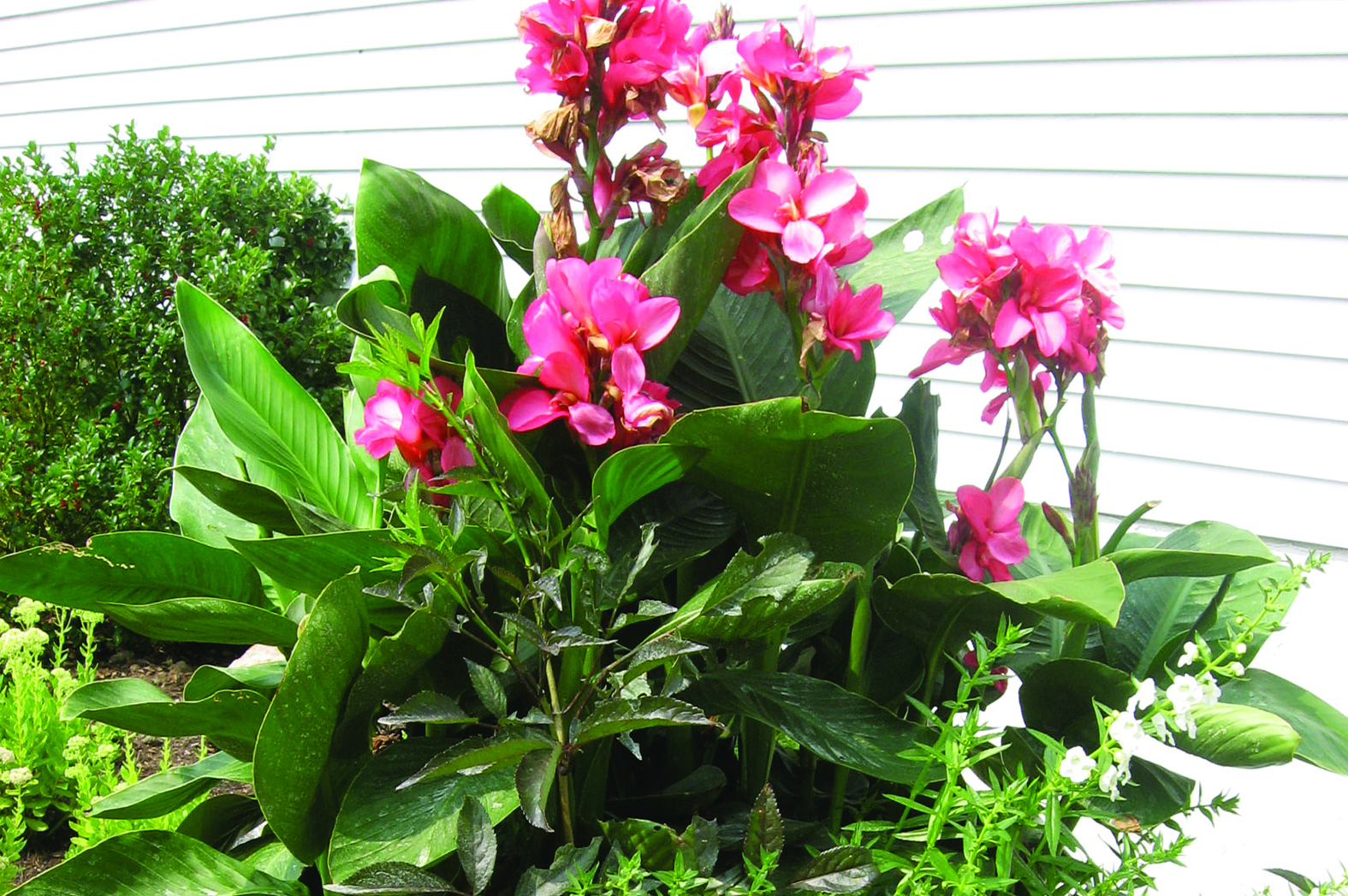BEAUTIFUL BLOOMS
MAINTAINING CONTAINER GARDENS

If you enjoy having blooming plants outside your home during the summer months, then by now you’ve likely planted your container gardens and hanging baskets with your favorite flowers and foliage, placed them where everyone can drool appropriately over them, and are standing back, admiring your handiwork. Nice job! Pat yourself on the back and kick back with a cold, refreshing beverage while you enjoy looking at the fruits of your labor.
The next thing to do is maintain those container gardens so that you can feast your eyes on all that botanical goodness through the fall season as well. Here are the main things to do now to keep flowering annuals and tropical plants happy this season. This information also applies to flowering bedding plants in the ground.
– WATER. Hopefully, when designing your container gardens, you chose plants with similar water requirements so they can thrive together. Container plantings require more watering through the summer than they do in spring. Check the moisture levels in pots regularly to prevent them from drying out beyond repair by sticking your forefinger to the second knuckle into the soil in the pot. If the soil is dry, it’s time to water. You can also use a moisture meter. It is better to water (and feed) in the morning or evening rather than during the heat of the day. You will probably have to water potted plants two to three times a week in the summer months (less in spring and fall), depending on the size of the pot and the material of which it is made. Hanging baskets may need daily watering in the hottest part of the season. Try to keep water from splashing all over the foliage in order to help reduce disease problems.
– FEED. Well, fertilize, technically, and you definitely want to do this because all the watering will leach nutrients right out of the pot, resulting in your plants looking “wimpy.” Annuals are heavy feeders typically, so if you want them to keep up the show, you’ve got to help them out. Either a slow-release granular, like Flowertone, labeled for blooming plants, or a water-soluble quick feed fertilizer labeled for blooming plants will do fine. Avoid fertilizing plants when the soil in the pots is dry. Water first, and then feed, so you don’t risk burning the plants.
– HAIRCUTS. Keep your container garden looking nice by trimming off dead or dying flowers, old or dead stems, and dead or damaged foliage. If your container has annuals and tender foliage, about once a month or so, trim back the whole thing by an inch or two. The exception here is for perennials and plants that only bloom occasionally. For those, wait until after bloom to trim old flowers. If you’ve been keeping up with the watering and feeding, however, your annual flowers will look so fabulous you probably won’t want to do it. Cut off the pretty flowers? Yes. Cutting them off will keep your container garden from turning into a leggy mess. And, because it will actually promote more flowers … and more flowers are good! I’m pretty sure we can agree on that. So, just channel your inner Edward Scissorhands and use this opportunity to remove the yucky stuff while you’re at it.
– PROTECT. Scan your plants when you water or feed them to look for signs of disease or bugs. Many bug problems can be treated with lower toxicity products like insecticidal soap or neem oil sprays. Always read label directions and follow them. They will tell you when and how much to spray, as well as give you appropriate precautions. It is always a good idea to wait until temperatures are below 85° to spray. Above that temperature, some sprays
will damage plant tissues. You can also consider spraying preventatively with insecticidal soap or neem once or twice a month. Neem oil also has some disease prevention and control properties which is a nice bonus.
Container gardens are an easy way to brighten up any outdoor living space. By following these simple recommendations, you will be able to keep them healthy and beautiful all season long.
Tina Mast
Communications director at Homewood Nursery in Raleigh.
- info@homewoodnursery.com
- www.homewoodnursery.com
- 919-847-0117

